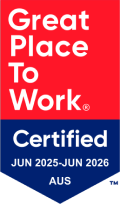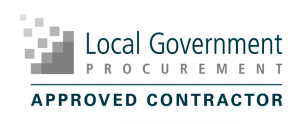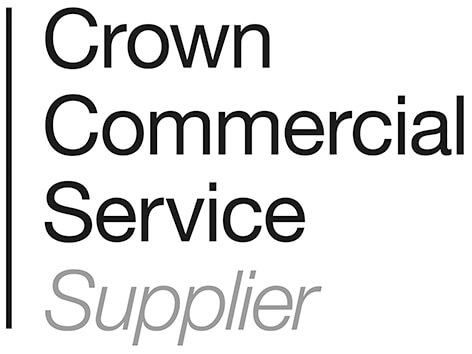Article
Last updated 12 November 2025
Why It’s Important to Have A Continuous Improvement Model for ERP Systems Like TechnologyOne
Enterprise resource planning (ERP) systems like TechnologyOne are vital for effectively managing organisations and optimising key business processes. However, simply implementing an ERP solution is not enough. To truly get the most value from your investment, organisations must adopt a continuous improvement model to consistently enhance and operationalise the system over time.
Without a structured approach for ongoing enhancement and innovation, you risk your TechnologyOne system becoming outdated and failing to meet evolving business needs. Organisations that do not actively maintain, enhance, and improve their TechnologyOne ERP system often find themselves stuck with legacy integrations, configuration and augmentation, and outdated modules that limit their agility and ability to leverage new products and capability.
Throughout this article, we will examine what a continuous improvement model entails, why it is so critical for ERP solutions like TechnologyOne, and the best practices for ERP enhancement. A continuous improvement framework provides the foundation to keep your TechnologyOne system optimised, efficient, and delivering maximum ROI year after year. It enables incremental evolution to keep pace with new demands, user needs, and technological advancements.
Adopting a model for continuous ERP system improvement provides the key to staying competitive.
What is a Continuous Improvement Model?
A continuous improvement model provides an ongoing framework for regularly assessing and enhancing your TechnologyOne and other integrated ERP systems over time. It establishes structured cycles of planning, executing, reviewing, and improving.
At its core, a continuous improvement model involves:
- Gathering feedback from users through surveys, interviews, focus groups, and monitoring usage data. This identifies pain points and opportunities.
- Planning changes and improvements to new and existing features, integrations, customisations, configurations, and processes. Prioritising based on business value delivered.
- Executing system upgrades, modifications, and process optimisations.
- Reviewing results and measuring success based on clearly pre-defined key performance indicators.
- Circling back and identifying the next round of improvements.

Effective continuous improvement is not a one-off initiative. It’s an evolving, cyclical methodology. The goal is constant, incremental optimisation over the lifespan of your TechnologyOne platform.
Having a structured model provides the rigour to keep innovations systematic, rather than ad hoc. It helps your TechnologyOne ERP system incrementally evolve and stay adaptable to ever-changing business conditions.
Conducting annual TechnologyOne system health checks ensures system issues and limitations can be detected early and factored into the broader long-term continuous improvement model. Further enabling a resilient and efficient system from which you can extract maximum value.
Why a Continuous Improvement Model is Crucial for TechnologyOne ERP Systems
ERP systems are multifaceted platforms that manage everything from financial data, asset management, human resources, payroll, and supply chain operations to property and rating. They require ongoing enhancement and optimisation to provide maximum value.
Here are some key reasons why having a continuous improvement model is so important for your TechnologyOne platform and other integrated ERP solutions:
- System configuration and capability need ongoing review. A continuous improvement model enables organisations to continuously evolve and enhance customisations, ensuring they remain efficient and effective.
- ERP systems integrate complex business processes between departments. A continuous improvement model provides structure to regularly refine workflows.
- Business needs change over time. A continuous improvement model enables your TechnologyOne ERP system to adapt and evolve to new requirements.
- New technologies emerge that could improve ERP capabilities. A continuous improvement model provides an avenue to evaluate and integrate innovations into your ERP ecosystem.
- Data integrity and security need ongoing auditing and updating. A continuous improvement model enables regular evaluation and identification of risks to be addressed.
- User experiences and interfaces require refinement. A continuous improvement model facilitates incremental UX improvements.
- Integrations with other ERP solutions need maintenance. A continuous improvement model facilitates keeping track of integrations with your TechnologyOne environment and ensuring they are up to date.
Without a structured continuous improvement approach, you risk your TechnologyOne ERP system becoming stagnant. Proactive, ongoing enhancement is required to optimise ERP systems and adapt to evolving business needs and customer expectations.
Best Practices for TechnologyOne Continuous Improvement
Implementing a successful continuous improvement model for your TechnologyOne system needs to follow best practices. These are:
- Establish an ERP continuous improvement steering committee or working group to guide enhancements. Include stakeholders from IT, business units, and leadership.
- Set regular cycles for review and planning, such as quarterly or biannual assessments. The frequency should align with business needs.
- Gather comprehensive feedback from a wide range of ERP system users through surveys, focus groups, interviews, and usage data.
- Maintain a prioritised pipeline of potential ERP solution enhancements and innovations based on expected delivered business value.
- Develop clear criteria for success and key performance indicators to measure results at the end of each cycle. This should be developed early in the planning phase.
- Take advantage of new technologies that could enhance your TechnologyOne capability, such as process automation and planning, budgeting and forecasting.
- Provide ongoing training and support to users on new features, integrations, and customised processes.
- Document all customisations, configurations, and process changes thoroughly.
- Review integration points with other systems regularly to ensure optimal data flows.
- Budget appropriately for continuous improvement initiatives and allocate proper resources. This needs to form part of the annual budgeting process.
By following structured best practices, organisations can maximise the value of their continuous improvement model and ensure their TechnologyOne ERP system remains optimised over time.
Conclusion
Implementing an ERP system like TechnologyOne is a major investment. However, the work does not stop once the system goes live. To truly maximise value over the long term, organisations must commit to continuous improvement through an evolving model of incremental enhancements.
The expense of not innovating could be far greater in the long run.
A structured approach to ongoing innovation is critical for optimising ERP system performance, security, integrations, and user experiences over time. Business needs change, technologies advance, and ERP solutions must keep pace. A continuous improvement model provides the key.
Of course, optimising and enhancing your TechnologyOne system is not without challenges. It’s impossible for one person to fully know all the features in a complex system. Working with an independent partner like Lánluas can help you to identify impactful improvements and develop solutions tailored to your needs.
While hesitations around cost, resources, and change management are understandable, the expense of not innovating could be far greater in the long run. Starting with a balanced plan makes allocating budget and resources more achievable. Engaging users early also smooths the path for change.
In a competitive landscape where customer and staff expectations are increasingly high and resources tight, organisations can’t afford to remain static. Adopting a continuous improvement approach for your TechnologyOne ERP system keeps processes, capabilities, and user experiences adaptive and optimised for the future.
Partnering with Lánluas and our team of expert TechnologyOne consultants simplifies the continuous improvement journey, providing the vision and skills to evolve your ERP systems and support lasting success. The time to take the first step is now. Contact Lánluas today.
Sign up to our newsletter for the latest news and insights.
Plus, get exclusive access to our VIP content.


